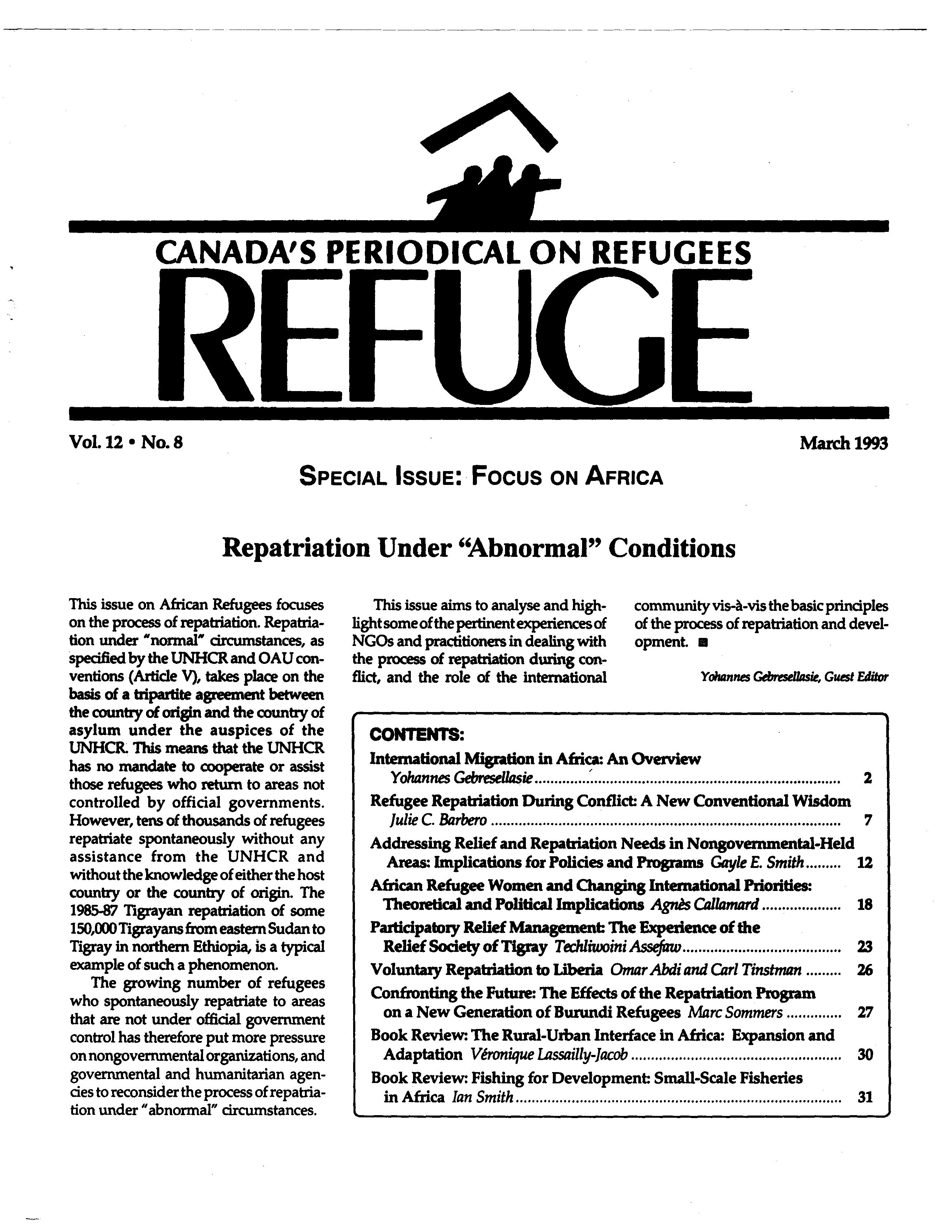Addressing Relief and Repatriation Needs in Nongovernment-Held Areas: Implications for Policies and Programs
DOI:
https://doi.org/10.25071/1920-7336.21703Keywords:
relief, repatriation, policies, UN, Ethiopia, UNHCR, NGOsAbstract
This paper will examine the existing constraints to addressing relief and repatriation needs in nongovernment-held areas and point to areas of possible change. Nongovernment-held areas are held by a force other than a central government army. In the case of Tigray, these areas were not only inaccessible to the army of the former central government of Ethiopia (GOE), but were also administered by an opposition force, theTigrayan People's Liberation Front (TPLF). Relative to other national liberation movements, the TPLF's administrative system was quite developed; in addition, the movement controlled a wide area encompassing most of rural Tigray and, by 1988, the whole of the region. Effective access was maintained from neighbouring Sudan, and the Relief Society of Tigray (REST) operated as an effective disaster management agency.Metrics
Downloads
Published
How to Cite
Issue
Section
License
Copyright (c) 1993 Gayle E. Smith

This work is licensed under a Creative Commons Attribution-NonCommercial 4.0 International License.
Refuge authors retain the copyright over their work, and license it to the general public under the Creative Commons Attribution-Non Commercial License International (CC BY-NC 4.0). This license allows for non-commercial use, reproduction and adaption of the material in any medium or format, with proper attribution. For general information on Creative Commons licences, visit the Creative Commons site. For the CC BY-NC 4.0 license, review the human readable summary.







